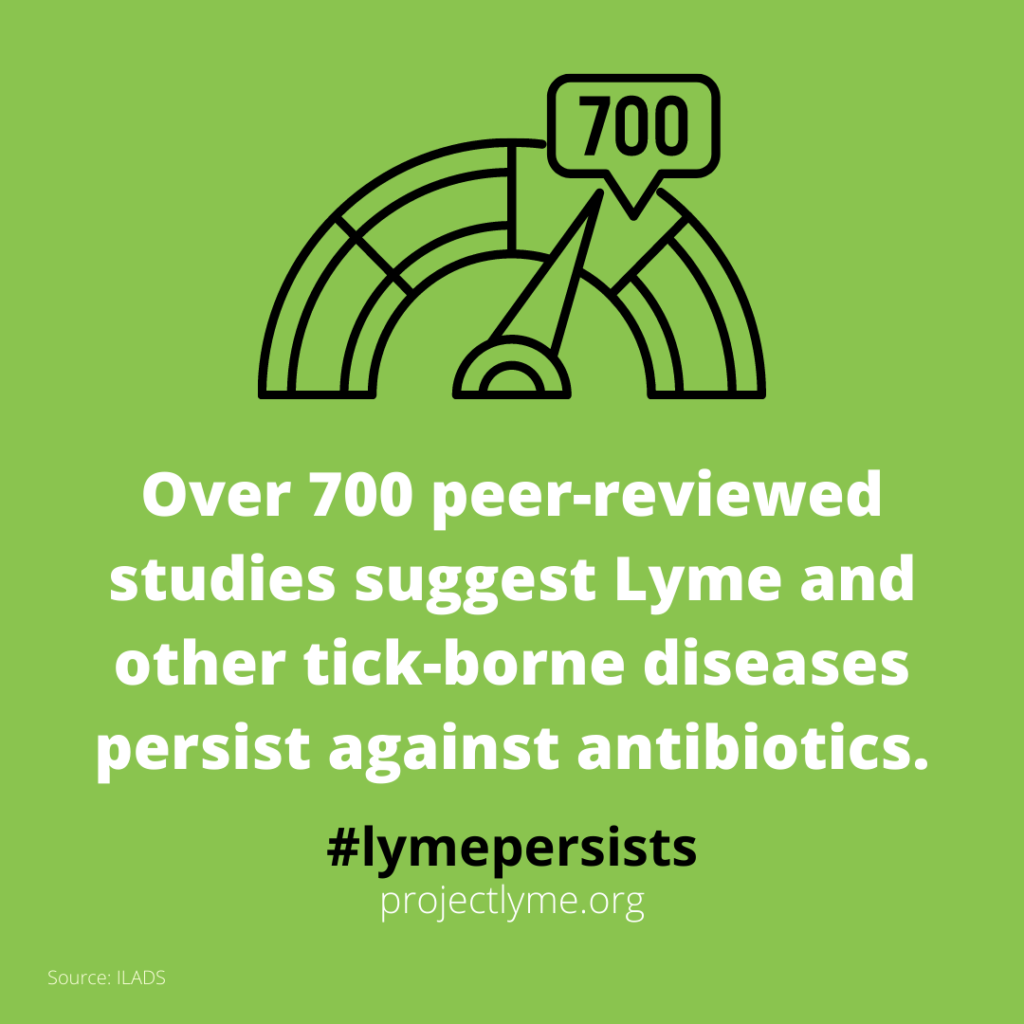SUPPORTED BY
A mountain of evidence


In 2018, doctors from International Lyme and Associated Diseases Society (ILADS) compiled a list of over 700 peer-reviewed studies that suggest the ability of Lyme and other tick borne infections to persist against antibiotics.
On that list are over sixty studies from the 80’s, and even one from 1979. Yet due to healthcare politics, persistence is still largely disputed in Lyme disease, which has stagnated funding from governments around the world.
Bacterial persistence is not anything new. In fact, it’s well documented in other diseases, including Syphilis, which is also caused by a spirochete—a motile, spiral-shaped bacterium—distantly related to Lyme disease.
Fortunately, privately funded research is gaining momentum unlike ever before. In recent years, teams from prestigious institutions like Johns Hopkins and the University of New Haven have been at the forefront of groundbreaking research that proves tick-borne infections persist against antibiotics.
In July 2020, Harvard Medical School announced it had received a $5 million donation for Lyme research and education. Additionally, in October 2020, the U.S. The Department of Health and Human Services announced a $25 million partnership with the Steven & Alexandra Cohen Foundation, making it the largest public-private partnership for Lyme research in history.
Most recently, in March 2021, the Steven & Alexandra Cohen Foundation donated $16 million to Columbia University, founding The Cohen Center for Health and Recovery from Tick-Borne Diseases. The partnership will focus on treating Lyme and associated diseases, along with a national clinical trials network that will focus on the identification of more effective treatments for Lyme and other tick-borne diseases.
Despite promising research in recent years, the optimal treatment for Lyme disease–both acute and persistent–and its co-infections, remains to be determined.